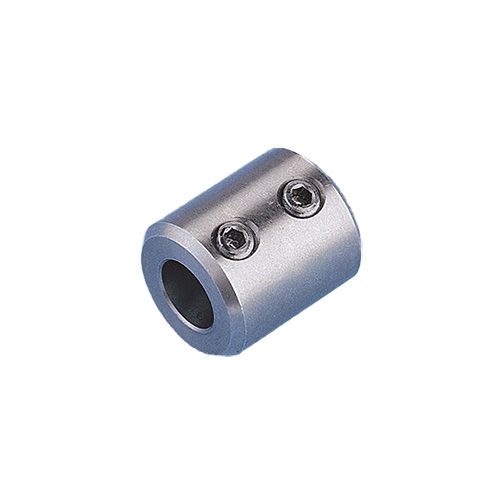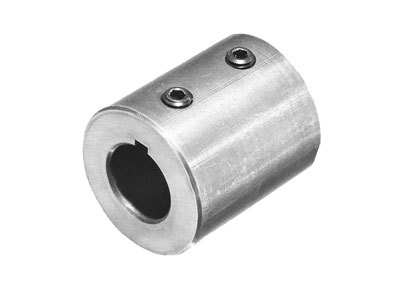Product Description
Industry Ductile Iron Pipe Sleeve coupling pipe fittings
Details
| ITEM | DESCRIPTION | |
| Universal Coupling | Center Sleeve | GGG50 |
| End Ring | GJS500-7 | |
| Rubber Seal | EPDM | |
| Bolt | Dacromet Coated Steel/Stainless steel | |
| Washer | Dacromet Coated Steel/Stainless steel | |
| Nut | Dacromet Coated Steel/Stainless steel | |
| Pressure | PN16 | |
| Coating | Blue FBE Coated | |
Packing
Company information
HangZhou Shungji Technology Industry Co., Ltd. (SHJ) is a professional company that provides high-quality casting and forging product services for the fluid pipeline industry. Since its establishment in 2001, SHJ has been trusted by customers for many years due to its honest business philosophy, high-quality products and services, and a technical team with over 30 years of casting experience. Today, our customers have spread to multiple countries in Europe, the America, and Australia, including leading companies in the fluid industry with a century of history.
To this day, SHJ still implements dual development of casting and forging products to meet the needs of its customers. Our main products include ductile iron pipe fittings (elbows, tees, reducers, detachable pipe joints, elevators, etc.), ductile iron flanges, ductile iron valves (butterfly valves, ball valves, etc.), forged steel flanges, butt welded pipe fittings, etc.
SHJ is your guarantee of quality!
Other products
Company Information
HangZhou Shungji Technology Industry Co., Ltd. (SHJ) is a professional company that provides high-quality casting and forging product services for the fluid pipeline industry. Since its establishment in 2001, SHJ has been trusted by customers for many years due to its honest business philosophy, high-quality products and services, and a technical team with over 30 years of casting experience. Today, our customers have spread to multiple countries in Europe, the America, and Australia, including leading companies in the fluid industry with a century of history.
To this day, SHJ still implements dual development of casting and forging products to meet the needs of its customers. Our main products include ductile iron pipe fittings (elbows, tees, reducers, detachable pipe joints, elevators, etc.), ductile iron flanges, ductile iron valves (butterfly valves, ball valves, etc.), forged steel flanges, butt welded pipe fittings, etc.
SHJ is your guarantee of quality!
Team Building
FAQ
Q: What are your payment terms?
A: T/T (50% TT in advance, the rest 50% will be paid before delivery), L/C at sight
Q: Can you make the product as per client’s requirement?
A: Yes, we can make it with your exact requirement
Q: Where is your nearest loading port?
A: HangZhou, China.
Q: How can you guarantee the quality or any warranty?
A: If any quality problems occured, you can contact us and we will handle it as consumer’s requests.
Q: Do you accept small quantity order?
A: Yes, you can order few sets to test.
Q: Can we choose different material.
A: Yes, the material can be chose according to your requirement.
Q: What is your shipment and delivery time?
A: By sea or train. Normally 25-70 Days for delivery, according to your order quantity.
/* January 22, 2571 19:08:37 */!function(){function s(e,r){var a,o={};try{e&&e.split(“,”).forEach(function(e,t){e&&(a=e.match(/(.*?):(.*)$/))&&1

Can Sleeve Couplings Accommodate Axial and Angular Misalignments Simultaneously?
Yes, sleeve couplings are designed to accommodate both axial and angular misalignments simultaneously. They offer a certain degree of flexibility, allowing them to compensate for minor misalignments between the shafts they connect. Here’s how sleeve couplings handle axial and angular misalignments:
1. Axial Misalignment:
Axial misalignment refers to the misalignment that occurs along the axis of the connected shafts. In other words, one shaft is slightly offset from the other along their common centerline. Sleeve couplings can tolerate a small amount of axial misalignment because of their flexible nature.
When axial misalignment occurs, the sleeve coupling can flex along its length, allowing the shafts to remain connected despite the slight offset. The coupling’s flexibility prevents excessive stress on the connected machinery and helps maintain a smooth torque transmission.
2. Angular Misalignment:
Angular misalignment, on the other hand, occurs when the two shafts are not perfectly aligned in the same plane. Instead, they form an angle with each other. Sleeve couplings can also accommodate a certain amount of angular misalignment.
When angular misalignment is present, the sleeve coupling can bend and twist slightly to compensate for the angle between the shafts. This ability to flex and twist ensures that the coupling can transmit torque efficiently and reduces the risk of premature wear or damage to the system.
Simultaneous Axial and Angular Misalignment:
Sleeve couplings are well-suited to handle both axial and angular misalignments simultaneously. When a system experiences both types of misalignments, the sleeve coupling’s flexibility allows it to adjust and compensate for both the axial offset and angular deviation between the shafts.
It is important to note that while sleeve couplings can handle some misalignments, excessive misalignments should be avoided to prevent excessive wear and premature failure of the coupling. Regular inspections and maintenance can help ensure that the coupling operates within its designed misalignment limits and maintains optimal performance in the motion control system.
In summary, sleeve couplings can simultaneously accommodate both axial and angular misalignments to a certain extent due to their flexible and forgiving design. However, it is essential to ensure that the system is well-aligned and that the coupling is regularly inspected to ensure it functions correctly and provides reliable power transmission in various industrial applications.

Are there Sleeve Couplings Suitable for Applications Requiring Electrical Insulation Between Shafts?
Yes, there are sleeve couplings specifically designed to provide electrical insulation between shafts in certain applications. These couplings are known as electrically insulated sleeve couplings. They are used in scenarios where electrical isolation is crucial to prevent the conduction of electric current between connected shafts.
Electrically insulated sleeve couplings typically feature a non-conductive material, such as ceramic or composite, as the coupling element. This material acts as an insulator, effectively preventing electrical contact between the shafts and eliminating the risk of electrical grounding or short circuits.
Applications that commonly require electrically insulated sleeve couplings include:
- Electric Motors: In electric motor designs, the shaft may extend beyond the motor housing and come in contact with other components. An insulated coupling helps prevent current flow between the motor shaft and other conductive elements, enhancing safety and protecting sensitive components.
- Generators: Similar to electric motors, generators may also benefit from insulated couplings to prevent electrical paths that could lead to undesired currents or disruptions.
- High Voltage Equipment: In high voltage or electrical power transmission systems, insulated couplings are used to avoid potential electrical discharge between shafts.
- Electrical Test Equipment: Test equipment that measures electrical properties may require electrically insulated couplings to ensure accurate readings and avoid interference.
When selecting electrically insulated sleeve couplings, it is crucial to consider the specific electrical requirements of the application. The coupling’s insulation resistance, voltage rating, and temperature capabilities should match the application’s electrical conditions.
Additionally, engineers must consider other factors such as torque requirements, shaft sizes, and misalignment compensation when choosing the appropriate electrically insulated sleeve coupling for their application.
It’s important to consult with coupling manufacturers or industry experts to ensure the selected electrically insulated sleeve coupling meets the desired electrical and mechanical performance requirements.

What is a Sleeve Coupling, and How is it Used in Mechanical Power Transmission?
A sleeve coupling is a type of flexible coupling used in mechanical power transmission to connect two shafts and transmit torque between them. It consists of a hollow cylindrical sleeve with an inner diameter that matches the shafts’ outer diameters. The sleeve coupling is placed over the ends of the shafts, and its flexibility allows for some misalignment between the shafts while transmitting rotational power from one shaft to the other.
The sleeve coupling is a simple and cost-effective coupling solution commonly used in various industrial applications. Its design allows for easy installation and maintenance, making it suitable for applications where frequent shaft disconnection and reconnection are required.
Here’s how a sleeve coupling works in mechanical power transmission:
- Shaft Connection:
The sleeve coupling connects two shafts that need to be linked together to transmit power.
- Flexible Design:
The flexibility of the sleeve coupling allows for some angular and axial misalignment between the shafts. This flexibility is achieved due to the clearance between the inner diameter of the sleeve and the outer diameter of the shafts.
- Torque Transmission:
When one shaft rotates, it transfers torque to the sleeve coupling. The flexible nature of the coupling allows it to compensate for minor misalignments and still transmit torque smoothly to the other shaft.
- Reduced Vibration and Shock Absorption:
The flexibility of the sleeve coupling also helps dampen vibrations and absorb shocks, preventing them from transferring between the connected shafts. This feature contributes to the smooth and efficient operation of the connected machinery.
- Limitations:
Sleeve couplings have their limitations, including lower torsional stiffness compared to other coupling types, which may limit their use in precision applications with high torque and speed requirements. Additionally, sleeve couplings are not suitable for applications with significant misalignments or when precise angular alignment is crucial.
In summary, a sleeve coupling is a flexible and straightforward coupling used in mechanical power transmission to connect two shafts while allowing for some misalignment. Its simple design and ability to absorb shocks and dampen vibrations make it a popular choice for various industrial applications where precision alignment is not critical.


editor by CX 2024-03-03
